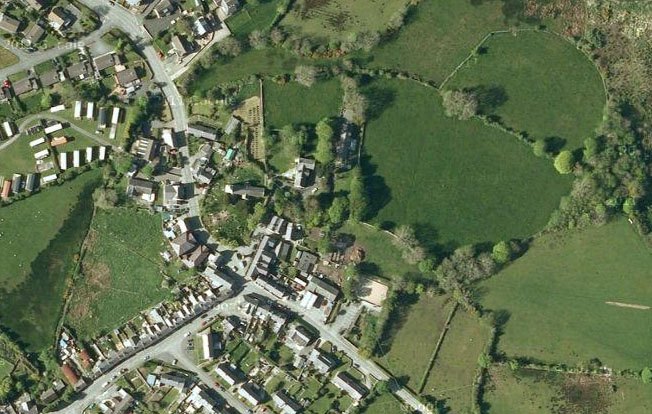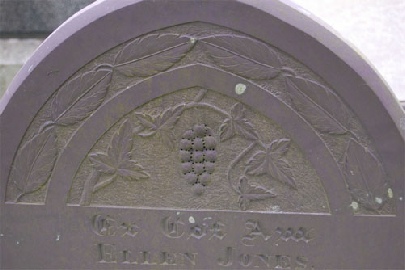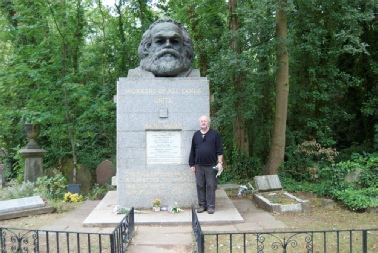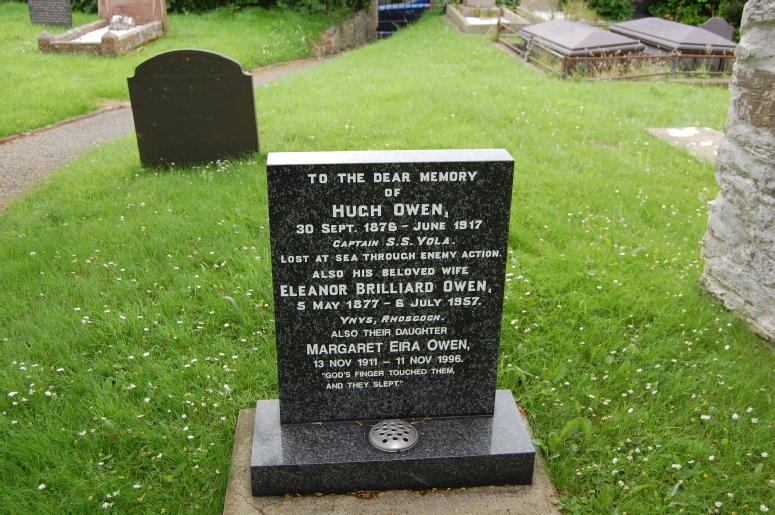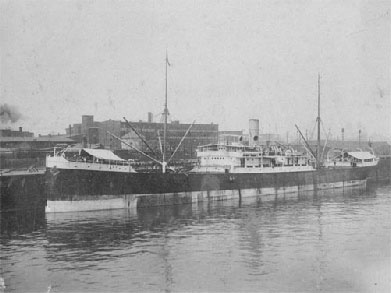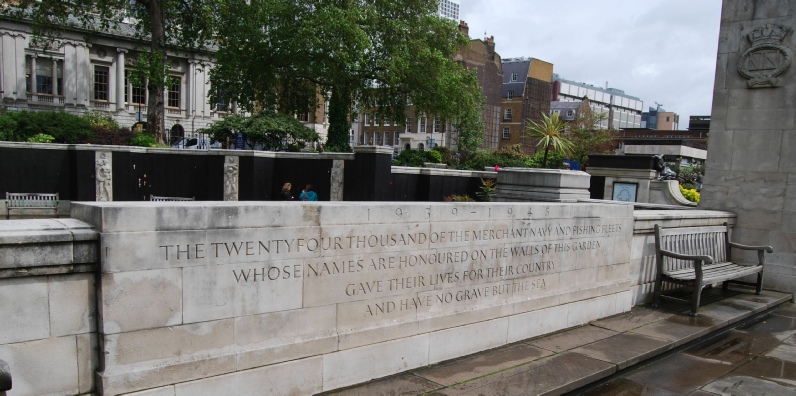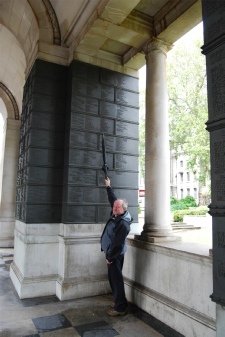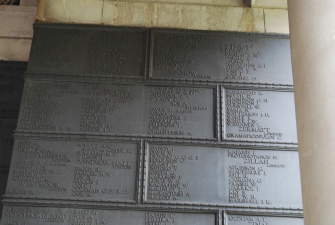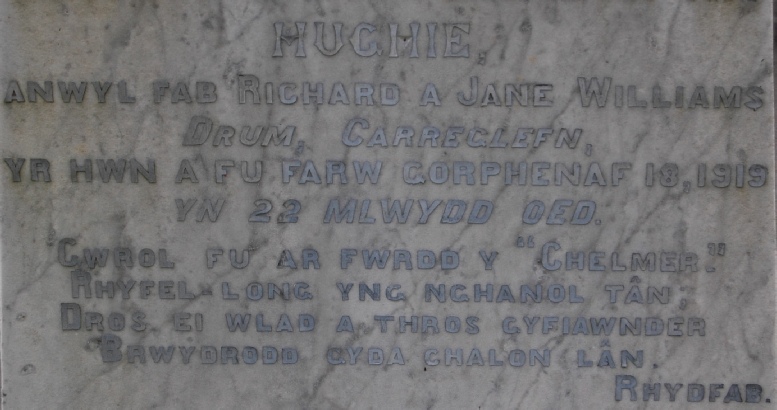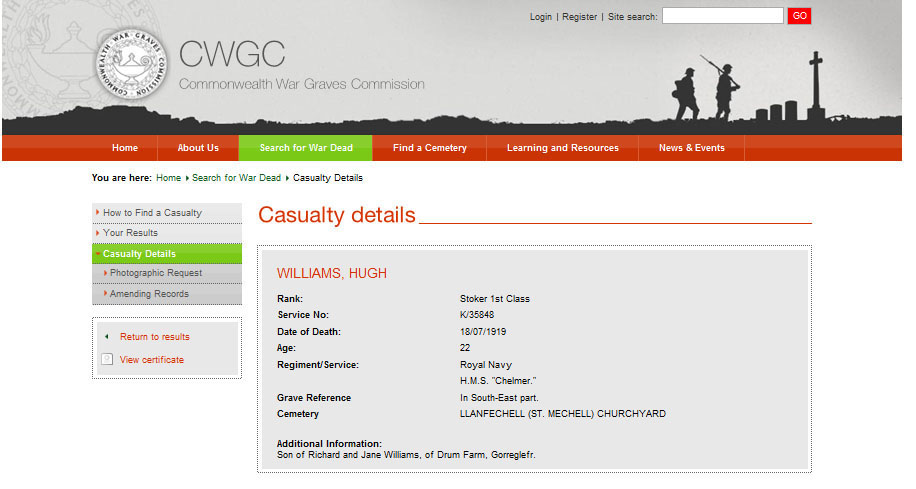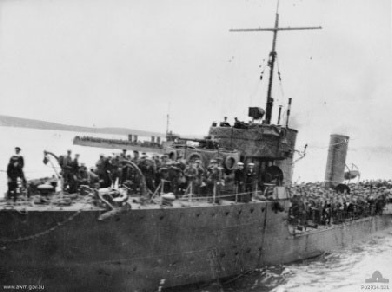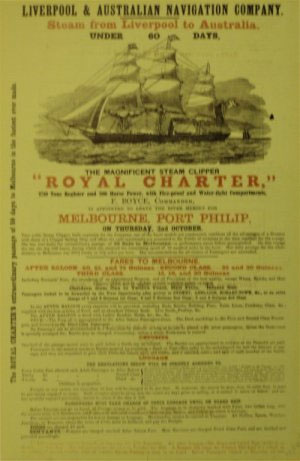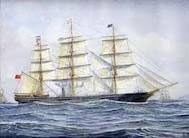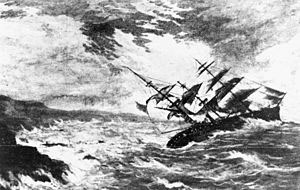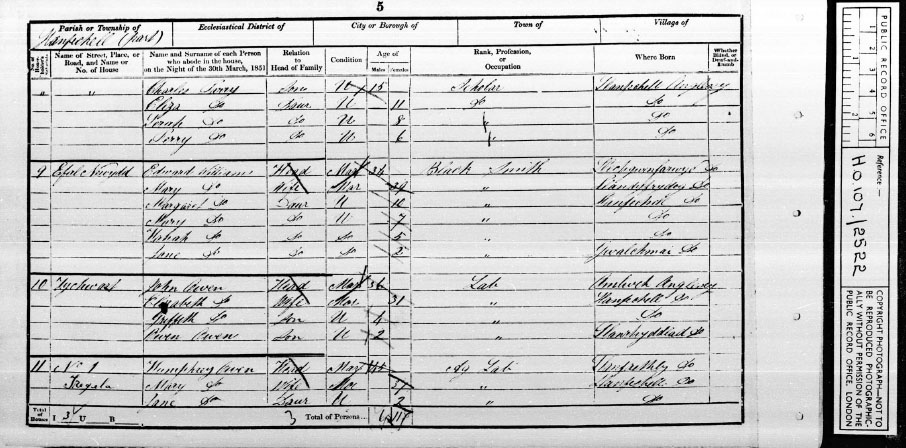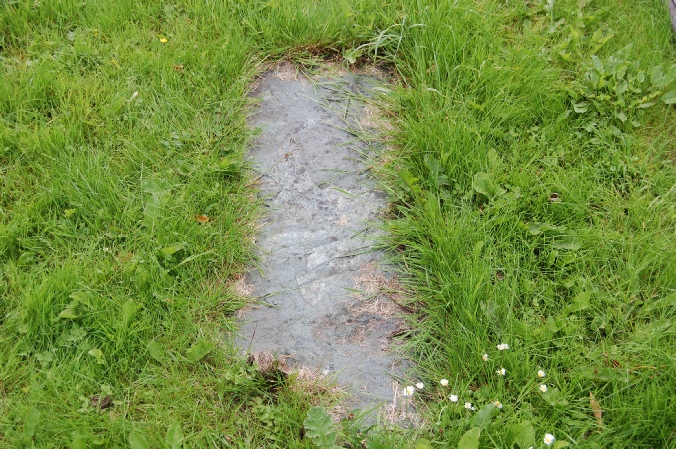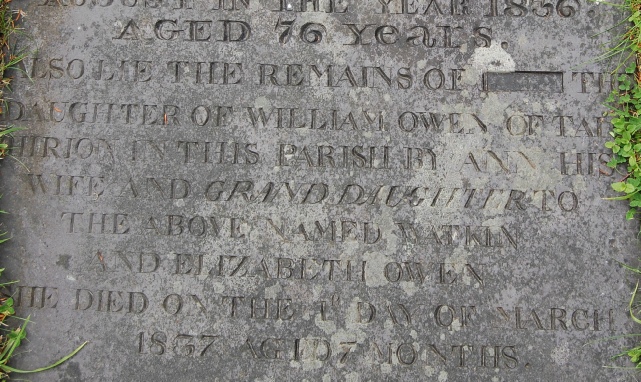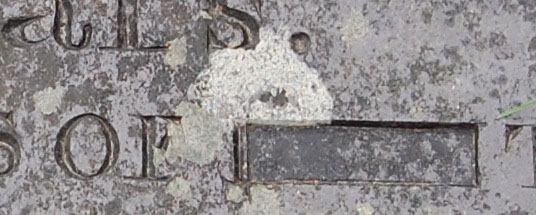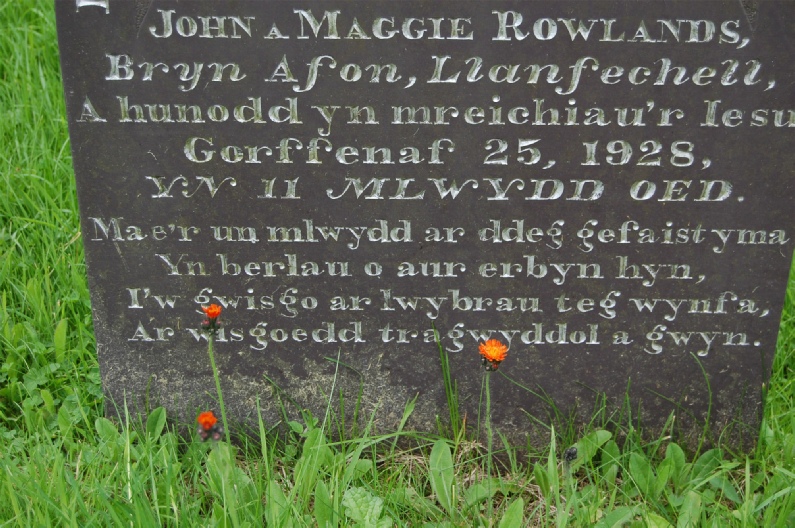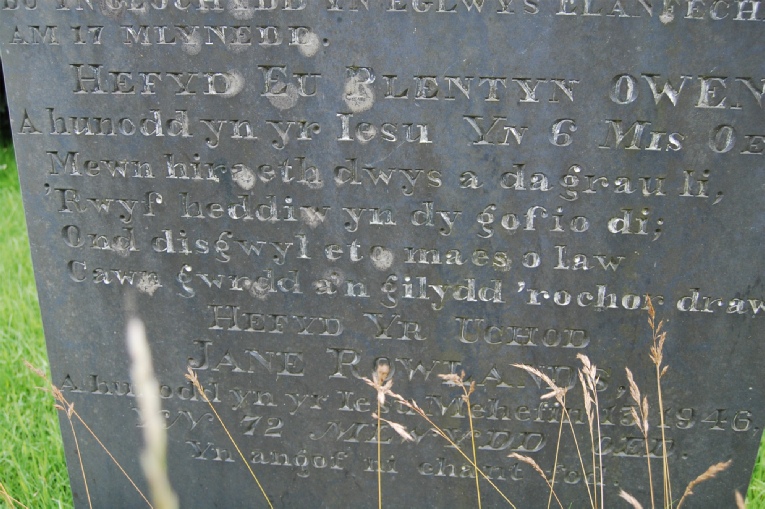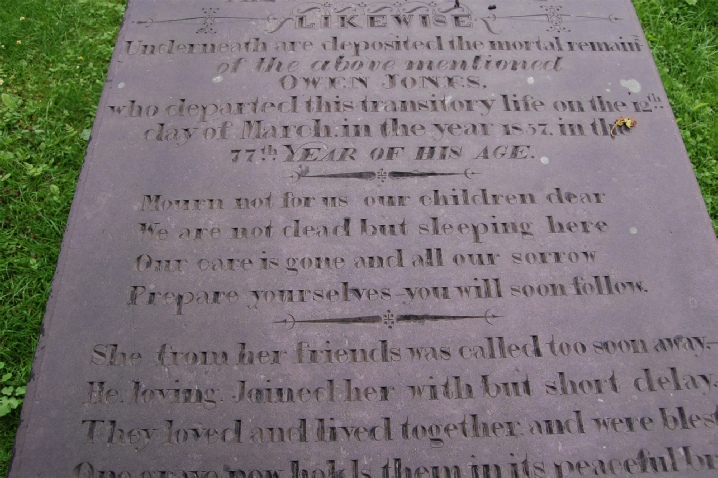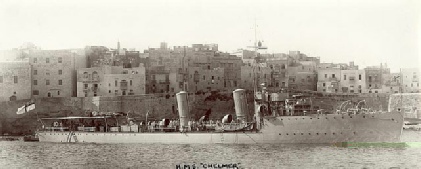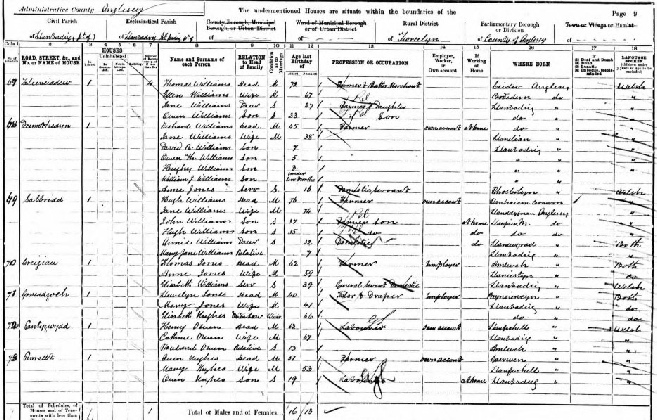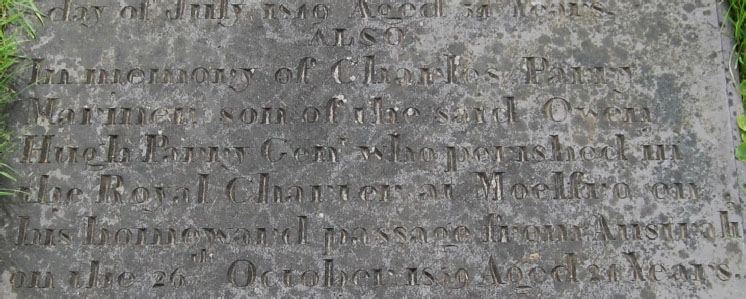
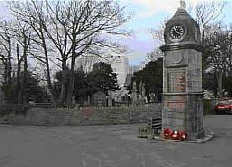

With thanks to Mr Nigel Thomas

|
Davies
|
12
|
Parry
|
16
|
|
Evans
|
5
|
Price
|
15
|
|
Griffiths
|
5
|
Pritchard
|
10
|
|
Jones
|
41
|
Roberts
|
19
|
|
Lewis
|
8
|
Rowlands
|
9
|
|
Owen
|
40
|
Thomas
|
18
|
|
Owens
|
6
|
Williams
|
50
|
There are 261 graves in the old cemetery, including:
From many different places-
|
Amlwch
|
|
Cemaes
|
|
|
Carreglefn / Llanbadrig
|
|
llanfcehell
|
|
… and dozens of others from as far afield as Batvia and Australia ….
*****************************************************************************
- Headstones, especially in the Victorian period had carvings on them.
- These carvings are symbolic and have a meaning.
Handshake - departing life
The Grape Vine - The Christian Faith
Pointing Finger -The hand/finger of God
IHS- The letters signify the Latin phrase ” In hoc signo vince”, which in English
means: “In this sign you shall conquer”.
The Column - Full column means that the deceased has reached full years, column that
seems to be broken means that the deceased has died prematurely
The Urn - The urn is a symbol of death from ancient times. The drapery symbolises
the veil that exists between life and death.
Things are likely to change!! -
Karl Marx, Highgate Cemetery
Even worse !!!!! -
Somebody …. Dead! Highgate East Cemetery
Interesting Memorial Stones in Llanfechell Church
************************************************************************************
Hugh Owen Master of SS Yola
‘….SSYola was a steamer, she was of 3533 grt and built in 1898. She's listed in
Lloyd's War Losses: The First World War as missing after sailing from New York, 26
Jan 1917, for London, with a cargo of wheat.
In this case, it has recently come to
be believed that Yola was torpedoed twice and sunk by U 55 on February 7, 1917 west
of Ushant. U 55 observed the ship sink but was unable to obtain the name of the vessel.
the U-boat described her though as a grain steamer with a southeasterly course ….’
(Official wreck website)
Click on 4 above images to see larger versions
***************************************************************************************
The Chelmer in Malta 1912
The Landing at Anzac Cove
The Chelmer took part in the Gallipoli Campaign and was part of the second wave attack
at Anzac Cove on the 25th April 1915.
‘……. the second wave, comprising the second half of the 9th, 10th and 11th as well
as the complete 12th Battalion (which was intended to be the brigade reserve), landed
from seven destroyers; HMS Chelmer, HMS Colne, HMS Ribble, HMS Usk, HMS Foxhound,
HMS Scourge and HMS Beagle ……….
Hugh Williams was a stoker aboard the Chelmer when a fire broke out. He appears to
have been the only casualty as there is no other entry for the Chelmer for that date
in the military databases.
*****************************************************************************************
Advertisement for the Royal Chgarter
The Royal Charter was a steam clipper which was wrecked off the coast of Moelfre
on the north-east coast of Anglesey on 26 October 1859.
The precise number of dead is uncertain as the passenger list was lost in the wreck
but about 459 lives were lost, the highest death toll of any shipwreck on the Welsh
coast.
It was the most prominent victim among about 200 ships wrecked by the Royal Charter
Storm.
The Royal Charter was built at the Sandycroft Ironworks on the River Dee and was
launched in 1855. She was a new type of ship, a 2719 ton iron-hulled steam clipper,
built in the same way as a clipper ship but with auxiliary steam engines which could
be used in the absence of suitable winds.
The ship was used on the route from Liverpool to Australia, mainly as a passenger
ship although there was room for some cargo. There was room for up to 600 passengers,
with luxury accommodation in the first class. She was considered a very fast ship,
able to make the passage to Australia in under 60 days.
The voyage would have taken them around the Cape of Good Hope on the outward journey
and around Cape Horn on the return.
It was said that Captain Thomas Taylor was obsessed with beating this record
In late October 1859 she was on the return voyage, and it had been uneventful. As
the ship reached Holyhead, however, weather conditions took a turn for the worse,
and Captain Taylor was advised to put into Holyhead Harbour but he refused and continued
onto Liverpool. At Point Lynas an attempt was made to pick up the Liverpool Pilot
but weather conditions made this impossible. By now the wind had risen to Hurricane
Force 12 on the Beaufort Scale.
The wind changed from East to North East driving the ship towards the rocks of the
Anglesey coast. By 11 o’clock that night she was anchored but by 1.30 am on the 26th
the port anchor chain snapped followed by the starboard chain an hour later. The
masts were cut to reduce the drag of the wing but it was too late (the captain was
criticised later for not cutting the masts earlier) and Charter was driven onto a
sandbank and later onto the rocks of Porth Alerch near Moelfre where she quickly
broke up. 450 people lost their lives. 21 passengers and 18 crew members survives,
all men. No women or children were saved
Mr Charles Parry’s memorial states that he was a Mariner, however he does not appear
on any of the crew lists.
There is a ‘Mr Parry’ on the second class passenger list, which is sometimes given
as ‘Mr Perry’. There is nothing unfortunately which allows us to say with certainty
that this was the same person as he who is commemorated in Llanfechell.
It must be remembered that no complete passenger or crew list survived.
*******************************************************************************************
Mystery One - Lost at Sea
No-one has heard of the Ant of Irvine
Could this be their resting place?
It’s just a rough stone and there does not seem to have been any inscription on it
Mystery Two - who was she?
******************************
*******************************************************************************
And someone wanted to make sure that someone kept to the straight and narrow !
**************************************************************************************
